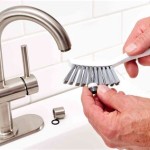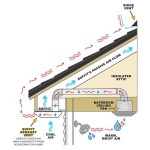How to Fix a Bathroom Wall Tile
Bathroom wall tiles, while durable, are still susceptible to damage from moisture, impact, and age. Addressing damaged or loose tiles promptly is crucial to prevent further deterioration, water damage, and potential mold growth. This article provides a comprehensive guide to repairing bathroom wall tiles, covering essential preparation, tile removal, surface preparation, adhesive application, tile installation, and grouting techniques.
Assessing the Damage and Gathering Materials
Before initiating any repair work, a thorough assessment of the damaged tile and surrounding area is necessary. This involves identifying the type and extent of the damage: Is the tile cracked, chipped, loose, or completely detached? Determining the cause of the damage is also important; is it due to a direct impact, water intrusion, or settling of the building's foundation? Identifying the root cause allows for preventative measures to be implemented during the repair process.
Once the damage is assessed, gather the necessary materials and tools. A crucial element is having replacement tiles that match the existing ones in terms of size, color, and texture. If the original tiles are unavailable, consider replacing multiple tiles within a specific area to create a more uniform appearance. Other essential materials include:
Grout: Choose a grout that matches the existing grout color and type (sanded or unsanded). Thin-set mortar (adhesive): Select a high-quality, water-resistant thin-set mortar suitable for bathroom environments. Grout sealer: Applying a grout sealer after grouting helps protect against moisture penetration and staining. Painter's tape: Protects adjacent tiles and surfaces from adhesive and grout. Cleaning supplies: Sponge, clean cloths, and tile cleaner for removing debris and adhesive residue. Safety glasses and gloves: Protection against dust, debris, and chemicals.
The required tools depend on the extent of the repair and the type of tile being used. Common tools include:
Grout removal tool: A grout saw, utility knife with a grout removal blade, or a power grout removal tool can be used to remove old grout. Hammer and chisel: For carefully removing damaged tiles. Putty knife or scraper: For removing old adhesive. Notched trowel: For applying the thin-set mortar evenly. Tile spacers: To maintain consistent grout lines. Rubber grout float: For applying and packing grout into the grout lines. Bucket and mixing tools: For mixing the thin-set mortar and grout. Level: To ensure tiles are installed evenly.
Removing the Damaged Tile and Preparing the Surface
Safe and careful removal of the damaged tile is a critical step. Begin by removing the grout surrounding the tile with a grout removal tool. Exercise caution to avoid damaging adjacent tiles during this process. Apply even pressure and work slowly to effectively remove the grout.
After the grout is removed, use a hammer and chisel to gently tap the damaged tile loose. Start from the center of the tile and work outwards, applying light, controlled taps to avoid cracking the surrounding tiles or damaging the wall behind the tile. If the tile is particularly stubborn, consider using a heat gun to soften the adhesive before attempting removal. Avoid excessive force, which can lead to further damage.
Once the damaged tile is removed, thoroughly clean the exposed surface. Use a putty knife or scraper to remove any remaining adhesive. Ensure the surface is clean, dry, and free of any loose debris. If the wallboard or substrate behind the tile is damaged, repair it before proceeding. Small holes can be filled with patching compound, while larger areas may require replacement of the damaged section of the wallboard.
If the underlying substrate is porous, applying a primer before applying the thin-set mortar improves adhesion. Choose a primer specifically designed for tile installations in wet environments. Allow the primer to dry completely before moving to the next step.
Applying Adhesive and Installing the New Tile
Once the surface is prepared, the next step is to apply the thin-set mortar. Mix the thin-set mortar according to the manufacturer's instructions, ensuring a smooth, consistent consistency. Avoid adding too much water, as this weakens the adhesive strength. Use a notched trowel to apply the thin-set mortar to the back of the new tile. The size of the notch on the trowel depends on the size of the tile; larger tiles require a trowel with larger notches.
Apply the thin-set mortar in one direction, creating ridges that will help the tile adhere to the wall and allow air to escape. Press the new tile firmly into place, aligning it with the surrounding tiles and using tile spacers to maintain consistent grout lines. Use a level to ensure the tile is flush with the adjacent tiles and that it is not tilted or uneven.
Remove any excess thin-set mortar that squeezes out from between the tiles with a putty knife or damp sponge. After installing the tile, allow the thin-set mortar to cure for the recommended time specified by the manufacturer, typically 24-48 hours. Avoid disturbing the tile during this curing period.
Grouting and Sealing
After the thin-set mortar has fully cured, the final step is to grout the tile. Remove the tile spacers and clean the grout lines with a damp sponge. Prepare the grout according to the manufacturer's instructions, ensuring a smooth, creamy consistency. Apply the grout to the grout lines using a rubber grout float, holding the float at a 45-degree angle and pressing firmly to pack the grout into the gaps. Work in small sections and remove any excess grout from the tile surface with the grout float.
After applying the grout, allow it to set for the recommended time, typically 15-30 minutes, or as specified by the manufacturer. Then, use a damp sponge to clean the tile surface, removing any remaining grout haze. Rinse the sponge frequently and avoid using too much water, which can weaken the grout. Shape the grout lines with the sponge, creating a smooth, consistent finish. Allow the grout to cure completely, typically 24-72 hours, before applying a grout sealer.
Once the grout is fully cured, apply a grout sealer to protect against moisture penetration and staining. Choose a high-quality grout sealer designed for bathroom environments. Apply the sealer according to the manufacturer's instructions, using a brush or applicator. Allow the sealer to penetrate the grout for the specified time, then wipe away any excess with a clean cloth. Applying multiple coats of sealer may be necessary for optimal protection.
After sealing the grout, clean the entire tile surface with a tile cleaner to remove any remaining residue. Inspect the repaired area for any imperfections and make any necessary adjustments. With proper preparation, tile selection, and installation techniques, the repaired area will blend seamlessly with the existing tile and provide long-lasting protection against moisture and damage.

Why Ed Tiles In Your Bathroom Are A Problem Shower Sealed

How To Repair Ed Tiles Remove And Replace

Water Damage Behind Shower Tiles

Easy Diy Guide On Removing Tiles From Walls Fantastic Handyman Au

How To Upgrade Bathroom Tile Without Replacing

How To Cover Wall Tile Without Removing Them In Bathrooms

How To Tile A Bathroom Wall Granada Cement Blog Ideas Tips And More

Home Improvement Bathroom Wall Tile Repair Diy Shower

How To Remove Replace One Bathroom Tile Ceramic Repair
A Quick And Dirty Bathroom Water Damage Repair Thumb Hammer
Related Posts







